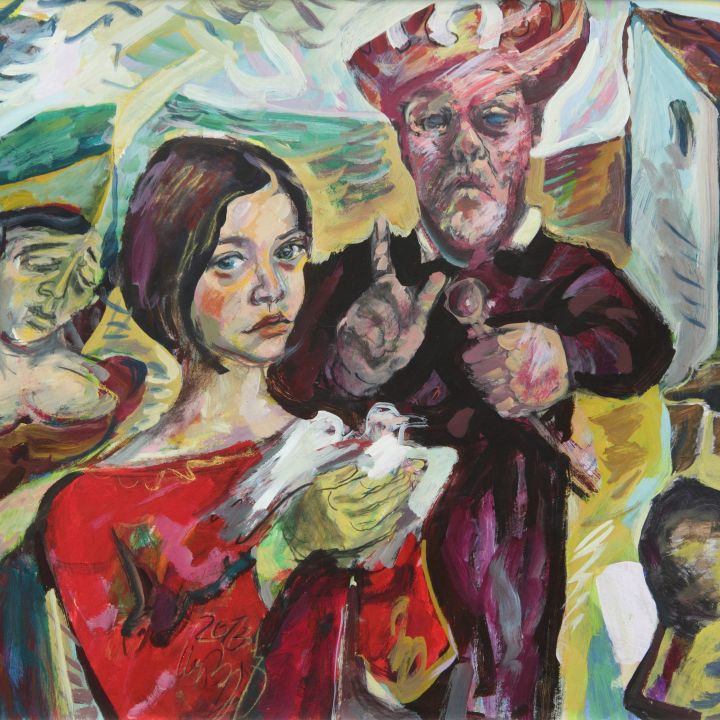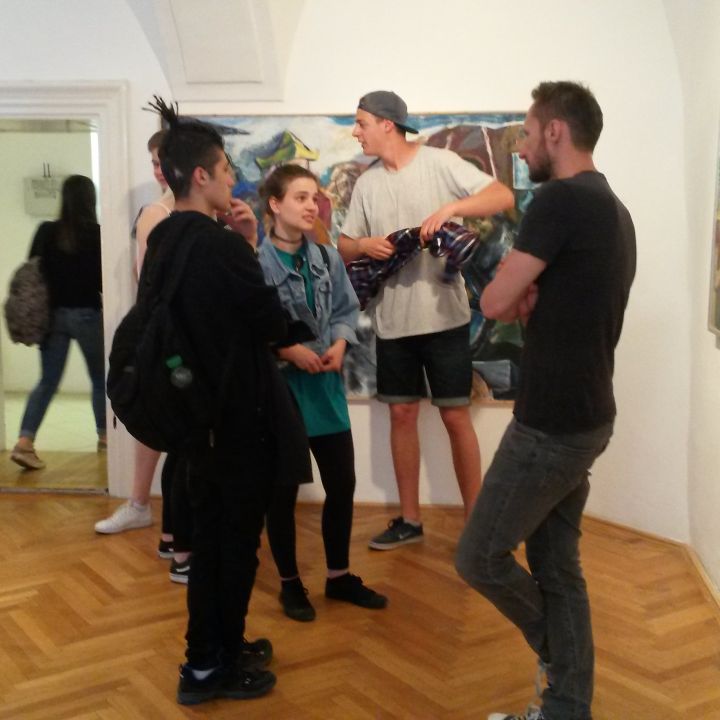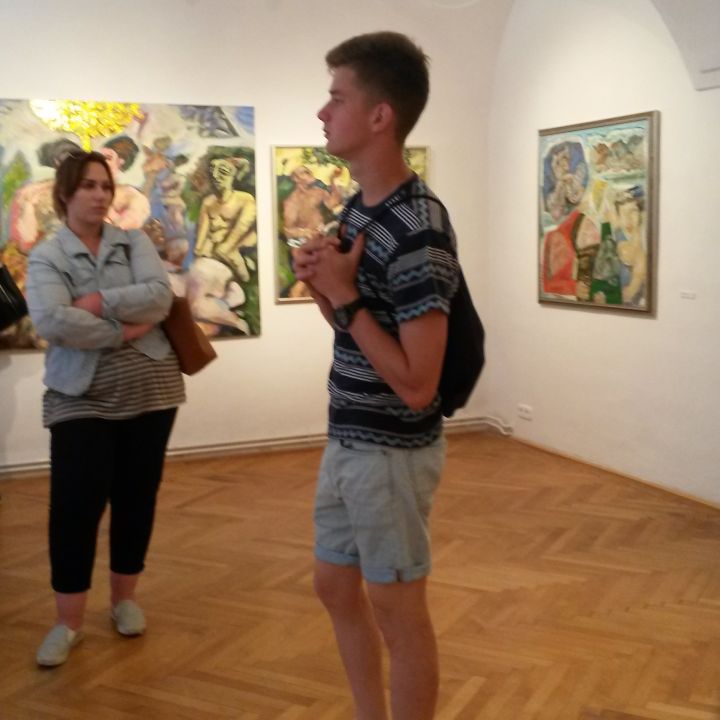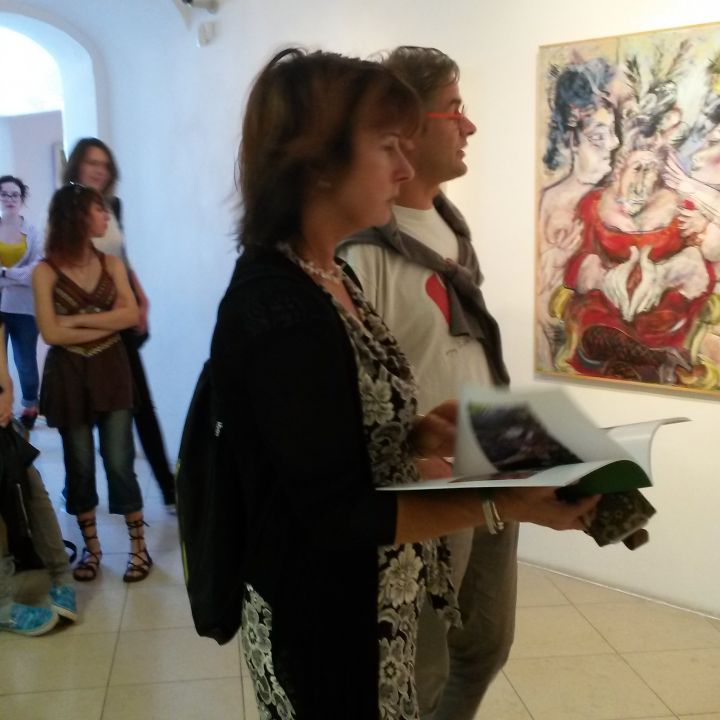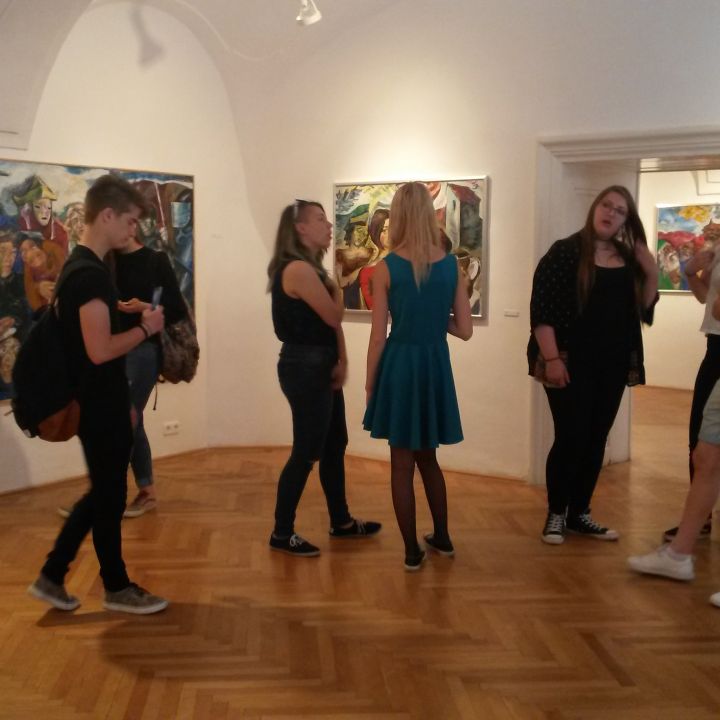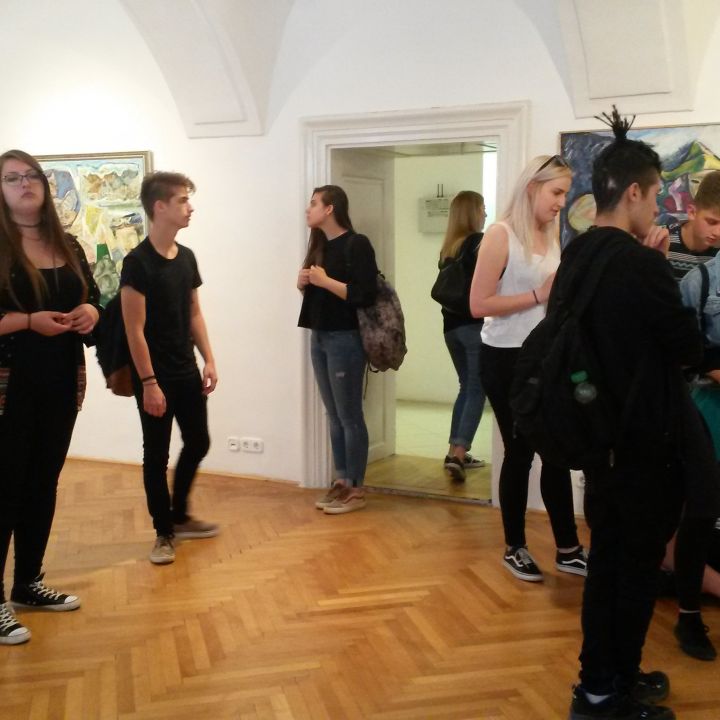"I almost always did what my inner self dictated. I have a boundless curiosity and a desire for freedom. I never have to explain what I do artistically. As far as the human factor is concerned I don't think anything has changed for thousands of years and I can safely say that it won't change. In fact it is a deep respect and admiration for the past that has saved me from being a beggar of today. I am a true museum man, I can't imagine myself in any kind of strange struggle."
ISTVÁN UGHY
I was born in Cristuru Secuiesc/Székelykeresztúr, Transylvania on 25 July 1938. I finished the 7th grade of elementary school there, then I continued my studies at the secondary school of fine arts in Târgu Mures/Marosvásárhely. From 1957 to 1963 I was a student of painting at the Jon Andreescu Academy of Arts in Cluj-Napoca/Kolozsvár. After finishing my studies I was transferred to Şimleu Silvaniei/Szilágysomlyó as an art director. From there I went to Reghin/Szászrégen. Since 1964 I had been a teacher here at the art school with 8 classes. Since 1968 I was a freelancer and in the meantime I was an external collaborator of the Cristuru Secuiesc/Székelykeresztúr museum. In 1957 I published the first fruit of my museum activities, entitled Drawings of Dust Horns by Bone Scratches. Soon afterwards I became an internal staff member. I worked as an exhibition organiser, archaeologist and ethnographer for 10 years. I had a lion's share in the creation of the museum's archaeological, ethnographic and natural history exhibitions and in the creation of the picture gallery.
In 1984 a joint book with Elek Benkő was published by Kriterion Bucharest under the title Cristuru Secuiesc/Székelykeresztúr Stove Tiles. In the 1980s my colleague Elek Benkő and I started to process the archaeological material of the museum for a publication entitled The Archaeological Topography of Medieval Keresztúrszék, which was published in 1992 in Budapest in the V.A.H series. This publication covers almost the whole of my museum work and therefore I consider it my own. I left the museum in 1986 and worked as an assistant until we moved to Hungary in 1990.
Since 1990 I had been working at the Count Károly Esterházy Castle and Landscape Museum in Pápa. I worked here as a graphic artist, as an archaeological draughtsman and I also managed the museum's fine art collection. Gábor Ilon, former director of the museum and I have published a book together called The Archaeology of the Carpathian Basin. It is a textbook for college and archaeology students. For a short time I was also the acting head of department of the museum. In 2005 I terminated my employment with the museum.
Since 1964 I have exhibited continuously in numerous exhibition venues in Transylvania: Cristuru Secuiesc/Székelykeresztúr, Odorheiu Secuiesc/Székelyudvarhely, Miercurea Ciuc/Csíkszereda, Târgu Mureș/Marosvásárhely, Cluj Napoca/Kolozsvár, Tirgu Mures/ Kézdivásárhely. Still in Transylvania I participateed with a group in an exhibition in the USA. In Hungary in in Pápa, Győr, Ajka, Sárvár, Veszprém, Zalaegerszeg, the Balaton region. In the Highlands in Losonc, Germany, Schwezingen, Kampen in the Netherlands, Szebenik in Croatia, Leonding in Austria. Recently again in Kampen. Then from October 2009 to August 2010 (1 year) three of us, Tibor Kádár, László Sipos and myself exhibited in Russia, twice in Moscow, twice in St. Petersburg, in Siktivkar (Komi Republic). In Petrozadovsk, Karelia, in Saransk, Mordovia and in Izhevsk, the capital of Udmurtia.
I am a member of the MAOE, the Association of Hungarian Artists and the figurative group founded in 2003.

